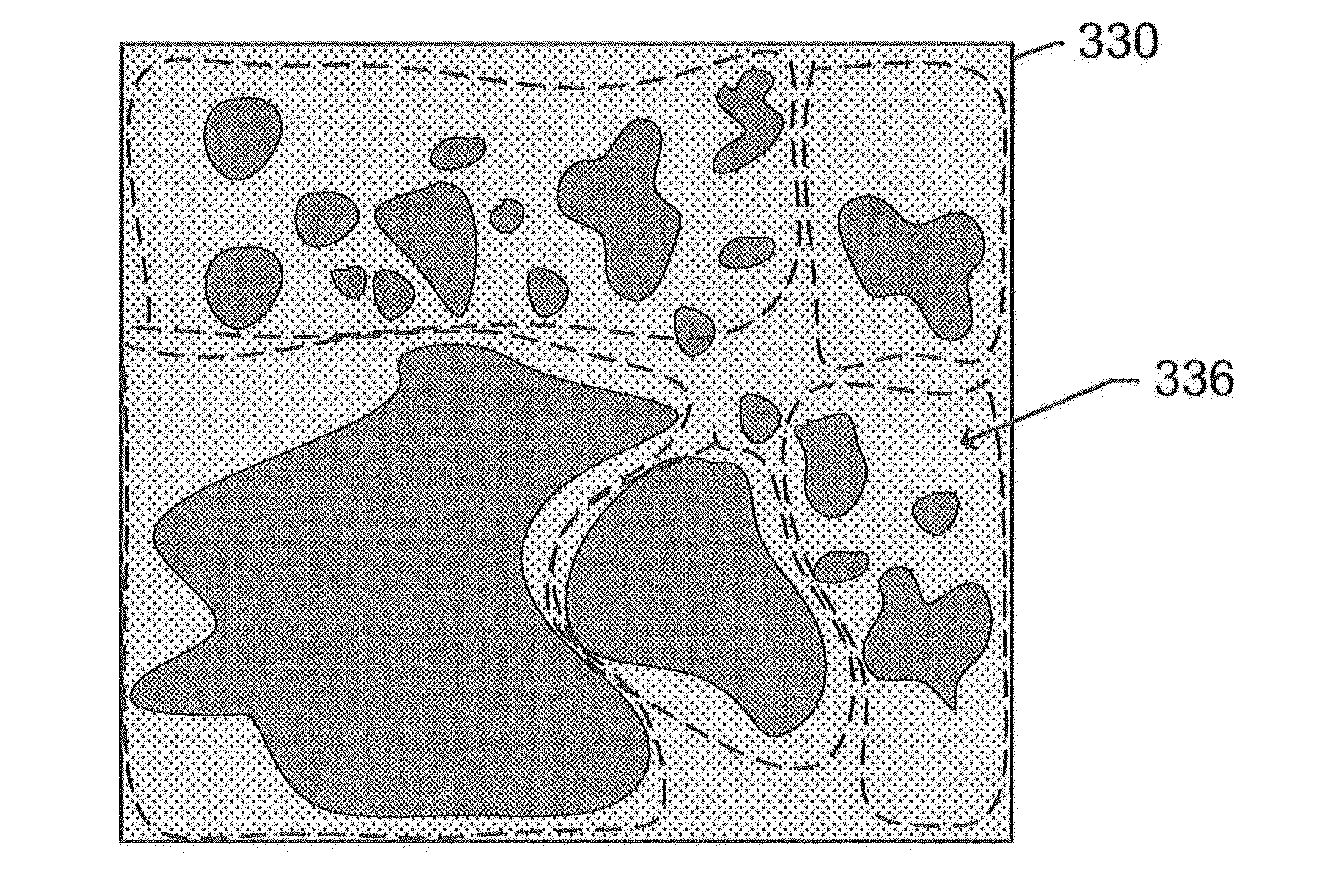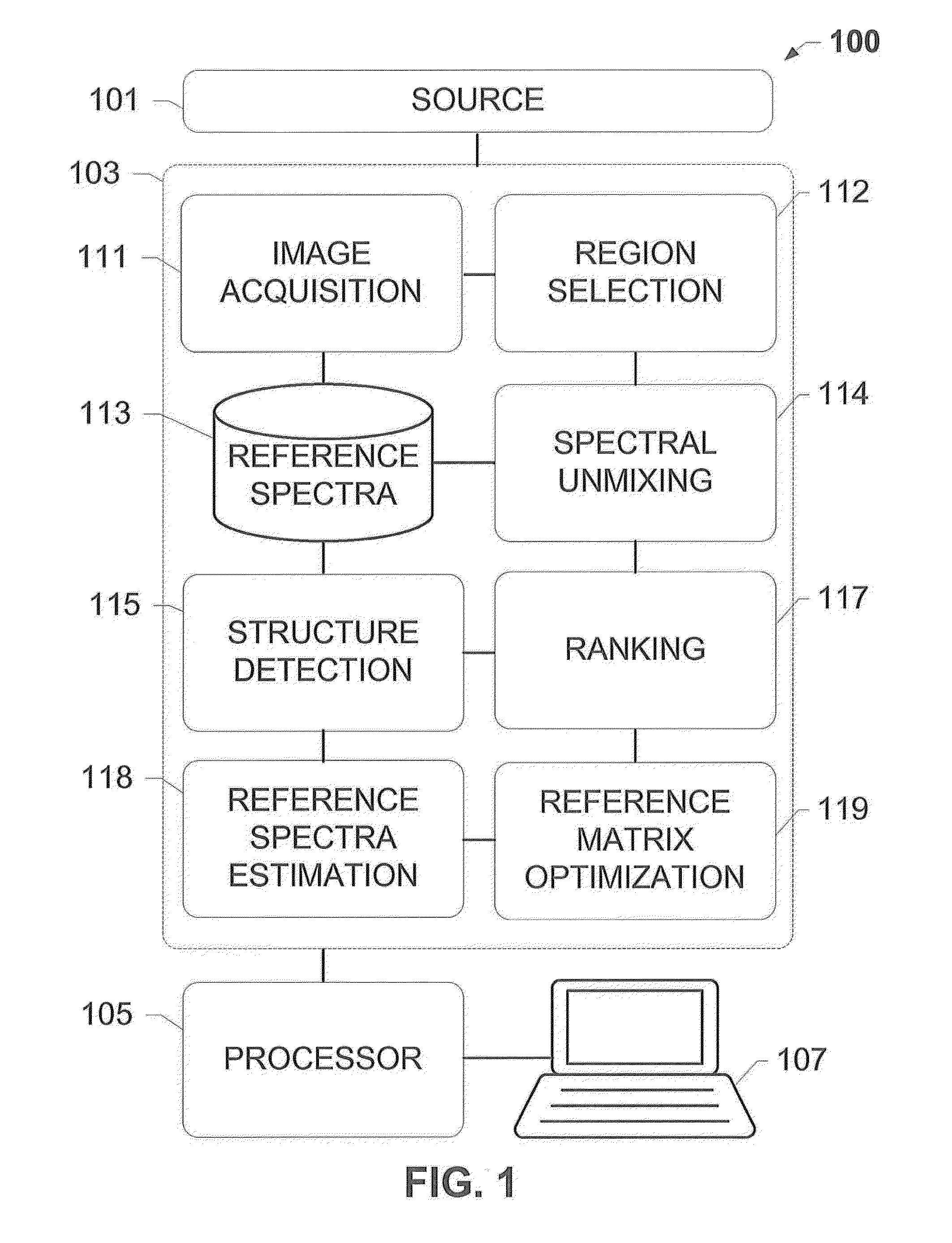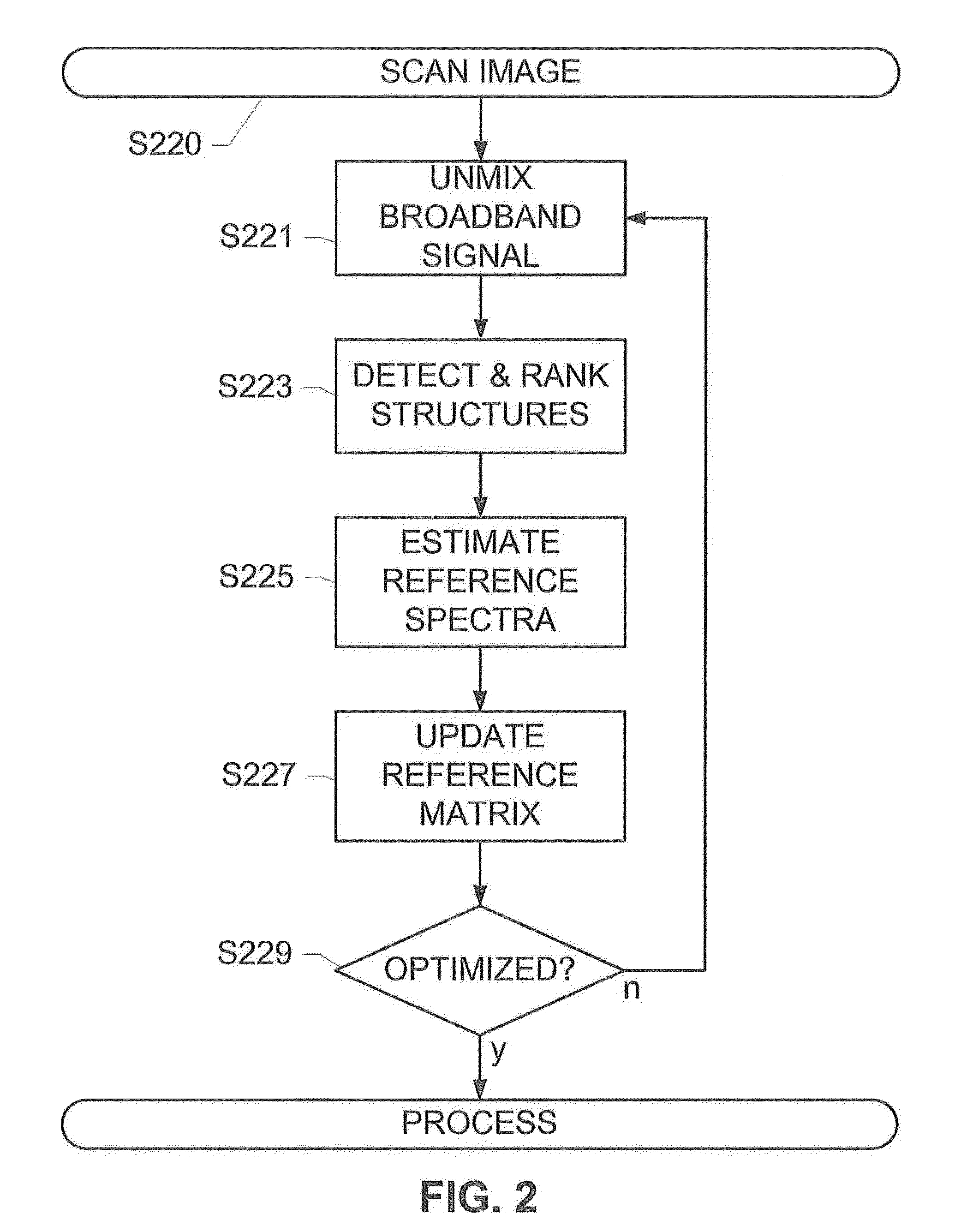Systems and methods for adaptive histopathology image unmixing
an image and histopathology technology, applied in image enhancement, image analysis, instruments, etc., can solve the problems of erroneous estimation of the nuclear component, difficult extraction of endmember spectra from the image and solving for abundance, and difficult accurate estimation of the abundance of quantum dots (i.e., unmixed images)
- Summary
- Abstract
- Description
- Claims
- Application Information
AI Technical Summary
Benefits of technology
Problems solved by technology
Method used
Image
Examples
Embodiment Construction
[0022]The subject disclosure presents systems and methods for adaptively optimizing the broadband reference spectra for an image comprising a plurality of fluorescent channels or updating the reference color for a bright-field image. For each region of an image, we update the reference vector, i.e. a reference spectrum in the case of a fluorescence image and a reference color in the case of a bright field image spectra and unmix the region till convergence. As an example application, this disclosure presents the details of the reference spectral refinement method for multi-spectral images, but the same technique can be applied to the bright-field images.
[0023]Taking the fluorescent image as an example, this adaptive optimization is based on structures detected in an unmixed broadband channel of the image. For instance, a slide holding a sample material may be scanned using a scanner coupled to a fluorescence or brightfield microscope system to generate a scanned image. The image is ...
PUM
 Login to View More
Login to View More Abstract
Description
Claims
Application Information
 Login to View More
Login to View More - R&D
- Intellectual Property
- Life Sciences
- Materials
- Tech Scout
- Unparalleled Data Quality
- Higher Quality Content
- 60% Fewer Hallucinations
Browse by: Latest US Patents, China's latest patents, Technical Efficacy Thesaurus, Application Domain, Technology Topic, Popular Technical Reports.
© 2025 PatSnap. All rights reserved.Legal|Privacy policy|Modern Slavery Act Transparency Statement|Sitemap|About US| Contact US: help@patsnap.com



